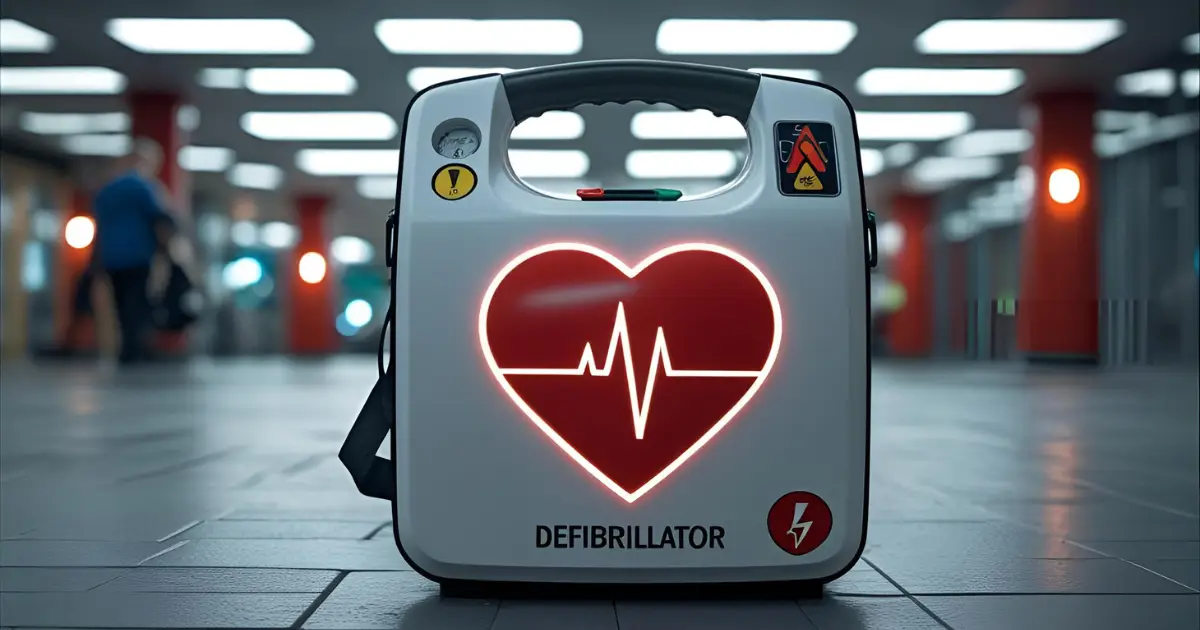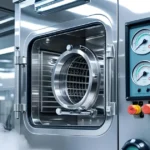Anytime, you might witness a Sudden Cardiac Arrest (SCA). It can happen to you or anyone around you, no matter where you are – at work, at home, or in a public place. The early symptoms of cardiac arrest are not always easy to identify, and it can occur without any warning.
In such critical situations, having quick access to a defibrillator – especially an Automated External Defibrillator (AED) – can make all the real difference.
An AED is a simple, portable machine that checks the heart’s rhythm and gives an electric shock if needed, to help the heart beat normally again. It’s made for everyday people to use, with clear voice instructions to guide you step by step.
It’s a powerful reminder that being prepared can save lives. Having an AED nearby means you might be able to help someone in those first few crucial minutes—or even save a life before emergency help arrives.
How Do AEDs Work?
AEDs are designed to recognize life-threatening heart rhythms and deliver an electric shock (defibrillation) to restore a normal heartbeat. They’re made for use by the general public, even without medical training. With step-by-step voice instructions and built-in safety features, AEDs guide users through the process confidently and safely.
The wide availability of AEDs in schools, airports, offices, malls, and other public places has drastically improved survival rates for out-of-hospital cardiac arrests.
What Is Defibrillation?
Defibrillation is the process of delivering a controlled electric shock to the heart when it experiences serious arrhythmias like ventricular fibrillation (VF) or pulseless ventricular tachycardia (VT). These conditions stop the heart from pumping blood effectively and can be fatal within minutes if untreated.
Defibrillators—whether automated or manual—interrupt the abnormal rhythm, giving the heart a chance to restore a normal beat and circulation.
Types of Defibrillators
Automated External Defibrillators (AEDs): Fully automated and designed for public use, AEDs analyze the heart’s rhythm and deliver a shock if needed—without requiring any medical judgment.
Manual Defibrillators: Used in hospitals and by trained medical personnel, these require a professional to assess the rhythm and control the shock manually.
Implantable Cardioverter Defibrillators (ICDs): These are surgically implanted devices that continuously monitor heart rhythms and automatically deliver shocks when dangerous arrhythmias are detected. They are used in patients at high risk of sudden cardiac arrest.
Technical Specifications
AEDs:
- Energy Output: Biphasic waveform, 150–360 joules
- Pad Lifespan: 1–2 years; easy to replace
- Battery Life: 2–5 years
- Operating Temperature: 0°C to 50°C (32°F to 122°F)
- Weight & Portability: 1 to 3 kg (2 to 7 lbs)
Manual Defibrillators:
- Energy Output: 200–360 joules (adults)
- Paddle Size: 8–10 cm in diameter
- Material: Stainless steel paddles
- Power Supply: AC/DC
- Weight: 2 to 9 kg (5 to 20 lbs)
Conclusion
Automated External Defibrillators (AEDs) and defibrillators are essential tools in emergency care, significantly improving survival chances for those experiencing sudden cardiac arrest.
Their simplicity, accessibility, and rapid response capabilities have transformed emergency response beyond hospital walls. By ensuring these life-saving devices are present and well-maintained in public and private spaces, we all play a part in creating safer, more responsive communities.




